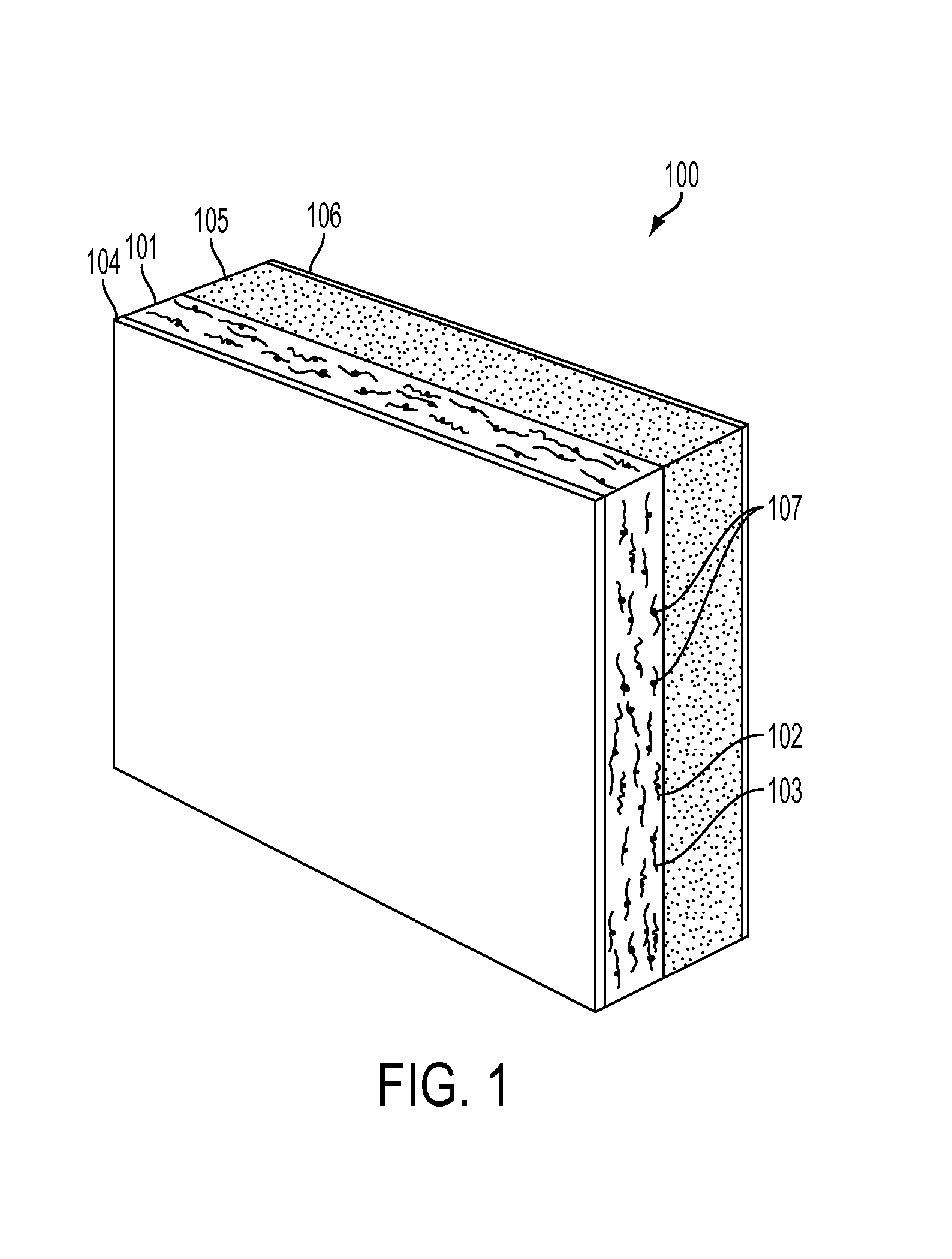Flame retardant nonwoven fabric and bedding articles
a non-woven fabric and flame retardant technology, applied in the field of flame retardant non-woven fabrics, can solve the problems of lack of the proper flammability protection often sought out in bedding components, high flammability of cellulose fibers, etc., and achieve the effect of similar char strength and base weight burn loss performan
- Summary
- Abstract
- Description
- Claims
- Application Information
AI Technical Summary
Benefits of technology
Problems solved by technology
Method used
Image
Examples
example 1
[0064]Flame performance in terms of char strength and basis weight loss percentage was determined for samples of flame retardant finished nonwoven fabrics comprising different combinations and amounts of rayon, acrylic, modacrylic, and / or polyester fibers, using the testing protocols indicated herein.
[0065]The acrylic fiber was obtained under the product name Texlan BRFEV from That Acrylic (staple length 38 mm, denier 1.5, Tg=85-87° C.). The rayon fiber was obtained under the product name LG from Nanjing Lenzing (staple length 38 mm, denier 1.5). The modacrylic fiber was obtained under the product name FHB from Vmod (staple length 38 mm, denier 1.5, Tg=87.5° C. (DSC transition peak)). The polyester fiber was obtained under the product name 20NW from DAK (staple length 38 mm, denier 1.54, Tg=70° C.).
[0066]The samples of nonwoven fabrics were prepared as carded and crosslapped nonwoven webs using a similar process to provide greige materials. The process used to prepare the nonwoven f...
example 2
[0075]Thermal gravimetric analysis was performed on acrylic fiber, modacrylic fiber, and untreated and flame retardant finished nonwoven fabrics comprising 70:30 (wt / wt) blends of rayon and one of acrylic and modacrylic fiber, to evaluate and compare the thermal decomposition properties of these fibrous materials. Thermal gravimetric analysis measures the amount of weight loss as the result of thermal decomposition. The equipment used for this testing was a Perkin Elmer Pyris 1 TGA, which was operated under air atmosphere at a heating rate of 20° C. / minute. TGA curves were generated for the TGA analyses conducted. The results of the TGA evaluations are summarized in Table 2. The thermal decomposition stages referenced in Table 2 refer to stages such as described in the above-indicated Hall et al. publication.
[0076]
TABLE 2UntreatedFR treatedUntreatedFR treatedAcrylic / rayonAcrylic / rayonModacrylic / Modacrylic / AcrylicModacrylicfabricfabricrayon fabricrayon fabricFiberFiber(30:70)(30:70)(...
PUM
| Property | Measurement | Unit |
|---|---|---|
| lengths | aaaaa | aaaaa |
| lengths | aaaaa | aaaaa |
| lengths | aaaaa | aaaaa |
Abstract
Description
Claims
Application Information
 Login to View More
Login to View More - R&D
- Intellectual Property
- Life Sciences
- Materials
- Tech Scout
- Unparalleled Data Quality
- Higher Quality Content
- 60% Fewer Hallucinations
Browse by: Latest US Patents, China's latest patents, Technical Efficacy Thesaurus, Application Domain, Technology Topic, Popular Technical Reports.
© 2025 PatSnap. All rights reserved.Legal|Privacy policy|Modern Slavery Act Transparency Statement|Sitemap|About US| Contact US: help@patsnap.com



